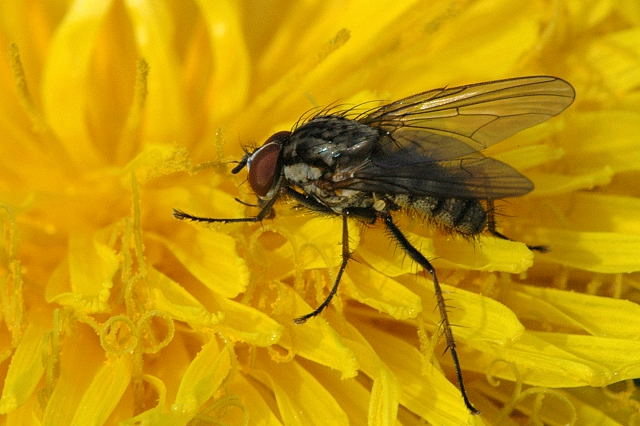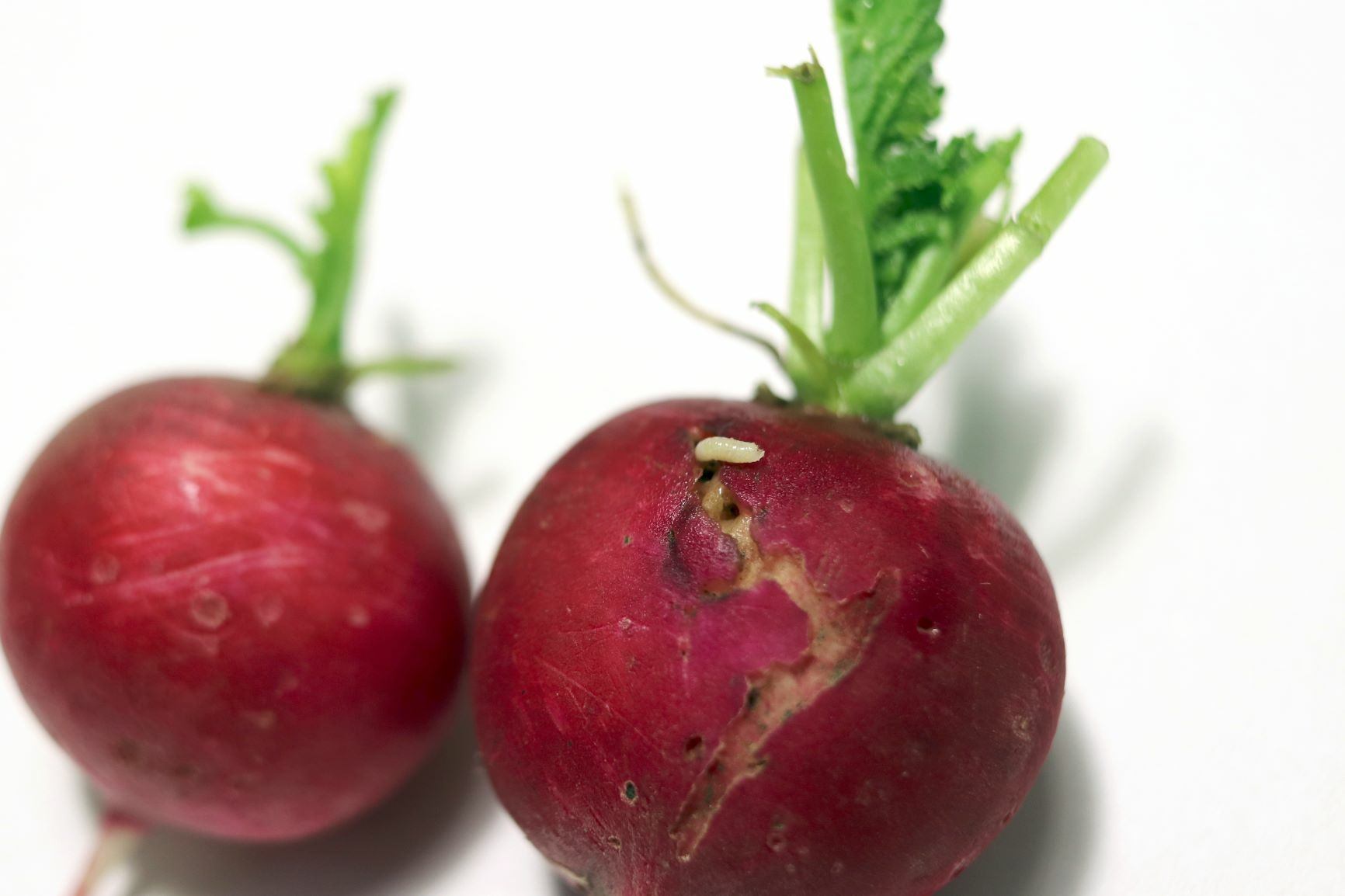Cabbage fly
How to get rid of the cabbage fly
The larvae of the cabbage fly feed on the roots of many cruciferous plants. If you dig up the roots of a radish, for example, the feeding tunnels are clearly visible. They destroy the plant's water and nutrient supply, which can lead to wilting of the leaves and, in the worst case, death of the plant.
Treatment and prevention
A mixed crop with tomatoes, deep planting and mounding the seedlings will help prevent this. Fly nets during the flight period (late April - May) and dusting with rock flour, lime and wood ash can prevent the flies from laying their eggs on the root collar. Soft soapy water will help with heavy infestations.
Affected plants

Cruciferous vegetables such as radishes, daikon and cabbage.
Other information
A distinction is made between the large cabbage fly (Delia floralis) and the small cabbage fly (Delia radicum). They feed in the same way, but differ in the speed of their life cycle. While the small cabbage fly is more active in spring and late summer, the large cabbage fly is often present throughout the growing season as it can produce up to four generations of offspring per year. They can reproduce rapidly in dry weather.

